Is It Time to Buy an Electric Car? I Drove 7 of Them to Find Out
“There are five reasons people buy an electric car,” someone told me at the Driving Change event in Centennial this past Wednesday. Those reasons are to save money, to save the environment, to reduce dependence on foreign oil, to use the carpool lane, and to have fun. Every person who buys an electric car has some combination of those five reasons to do it.
And after taking seven different electric cars around the test track, I can tell you that having fun is a huge part of why you should buy one.
Driving Change in Colorado
Environmental protection is an important issue to residents of the Rockies—if you spend more than a few days driving through Denver, you’ll see tons of hybrids (mostly the familiar Prius), a few Chevy Volts, and even a Tesla or two. But the electric car market is expanding rapidly, and there are a lot more affordable options out there now. No matter what sort of electric you’re looking for, it’s likely that someone’s either selling it now or will be soon.
The Driving Change event was put on by the Clean Cities Denver Metro Coalition, the American Lung Association, the Regional Air Quality Council, and Schomp BMW to give journalists a chance to drive and learn about some of the newest electric cars on the road. For several hours, members of the media got to talk to dealers, get the low-down on car specs, and take a few laps around the test track.
Seven different cars from six manufacturers were there, and I took a spin in all of them. Read on for my thoughts on each car, as well as some final remarks on what I learned about the future of electric vehicles.
Ford C-MAX Energi
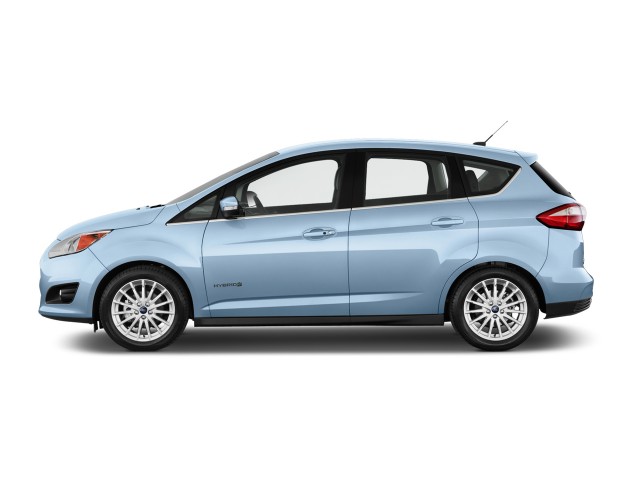
The first car I drove was Ford’s new plug-in hybrid, the C-MAX Energi. It’s a five-seater with a modest 188 horsepower, but it’s still zippy enough to get up and go when you put your foot down. Its 3900 lbs. moved pretty nimbly through the course for a five-seater.
But where the C-MAX Energi really shines is in its total range. A full charge will get you 21 miles of electric driving, but a full charge and a full tank of gas will net you 620 miles. That means you could get from Denver to Blackfoot, Idaho; Hobbs, New Mexico; Huron, South Dakota; or Smithville, Missouri with a little more than a single tank. That blows away every other car that was on the track at the event.
It also tops the new Prius plug-in hybrid by quite a bit. The only other car with a comparable range is Ford’s Fusion Energi, which also gets about 620 miles. Combine that with a 4-star safety rating and a very reasonable price tag ($26,700 after federal and Colorado rebates), and you have a solid choice for a plug-in hybrid for your family—or your ski crew.
Chevrolet Spark EV
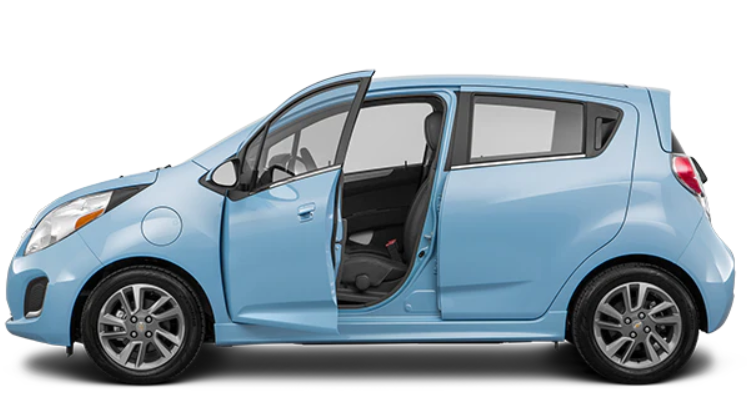
The next car I got in was the tiny Chevy Spark EV—this little four-seater doesn’t pack a huge amount of room, but it’ll comfortably fit four adults. The Spark EV’s 327 lbs./ft. of torque will really move the car when you give it some gas (so to speak). We shot around the track pretty quickly in this one, and the short wheelbase made it easy to maneuver through the lane changes and slalom portions.
The Spark EV’s 82 miles per charge isn’t the highest out there, but it puts it very near the top. In compact electrics, it’s second only to the Nissan Leaf. You’ll spend a long time charging the Spark from a wall outlet to get that many miles, though—a 120V outlet will take just over 20 hours to give it a full charge. Not exactly overnight. A 240V outlet, though, will only take 4 hours. (You can have a 240V outlet installed in your home for $400–$800, depending on your electrician.)
Unfortunately, the Spark EV isn’t currently available to buy in Colorado. You’ll have to buy one in California, Oregon, or Maryland. Hopefully it’ll be here soon. Still, with a base price of $26,700 and a federally rebated price of $19,100, it’d be worth the drive out to California to pick one up.
BMW i3
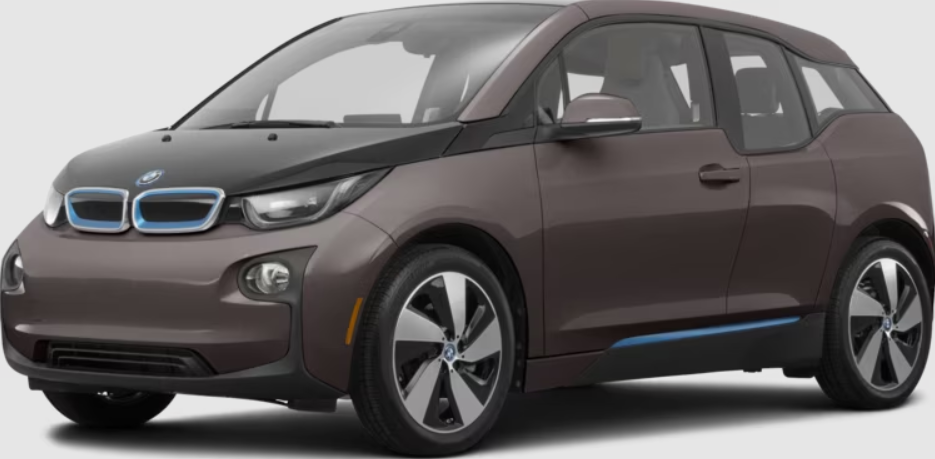
This was the car that I was looking forward to driving the most; I’ve been a long-time fan of BMWs, and the i3 is their first foray into a reasonable electric car. I was not disappointed. Its funny shape defies classification, but its four-seat capacity and 81-mile range plant it firmly near the top of the compact electric scale (though you’ll need a full 20 hours to get a full charge with a 120V outlet). There’s also an available range extender that brings the range up to 150 miles, which far outstrips any other all-electric compact.
What really stands out about the i3, however, is that it’s built from the ground up to be an electric. It has a super lightweight chassis (2,650 lbs.) thanks to the inclusion of carbon fiber and the lack of space needed for things like a transmission. Many of the other electrics out there are converted versions of internal combustion engine cars, and are heavier because of it. In addition to the innovative design, the entire car is made to have 50% of the carbon footprint of a standard car—ethically sourced wood, materials made from recycled plastic bottles, naturally dyed leather . . . it all adds up to an impressively environmentally friendly car.
The i3’s performance matches its environmental chops, too. You can really feel the light weight when you accelerate and take sharp corners; it handles like a little sports car. Unfortunately, this handling and environmentally friendliness (as well as the world-famous BMW badge) come at a price: the base price of the i3 is $43,300 (the range extender adds another $3,000 or so). With federal and state discounts, though, it can be had for just under $30,000.
Nissan Leaf
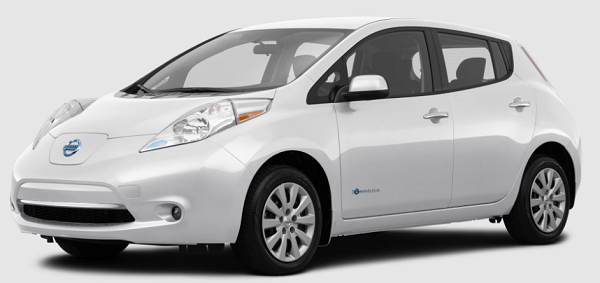
The Leaf has been around for a while, and in the five years that it’s been on the road, it hasn’t exactly made big waves. But it might have been the most surprising car that I drove at this event. It’s a five-seater hatchback, and there’s plenty of room for people and gear. It gets 84 miles on a charge. Its 3,200 lbs. and 107 horsepower combine for a surprisingly sprightly feel (Nigel from Boulder Nissan encouraged me to really let it rip on the straightaway, and it definitely brought a smile to my face).
All of that, and the base price is $28,900, which puts it close to such road standards as the Ford Explorer and the Chevy Silverado. Combine that with the federal and state rebates and you could get yourself a fully electric car for just over $16,000, around the same price as a Ford Fiesta (and way cooler). It’s hands-down the best deal for an all-electric compact car that I saw on the track.
The Leaf feels very well-rounded; good size, good range, good power and handling . . . if you want to buy an electric car, I’d be hard-pressed to recommend something over the Leaf with the currently available options. It even has a five-star safety rating. When I sat in the driver’s seat, I wasn’t expecting much. I humbly submit to Nissan: you hit a home run with this one.
Chevy Volt
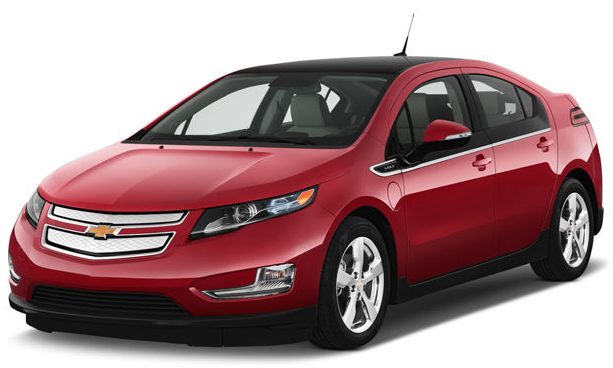
The Volt. It’s the car everyone thinks of when you talk about electric cars. It’s the one I see in Denver the most. I was really curious to get in one and take it for a spin, but I had no idea what to expect. The Volt blew me away—but not for the reason you might expect. Out of all of the cars that I drove, the Volt felt the most familiar. Many of the others cars scream “electric!” when you get in. The shifters are weird shapes or in weird places. There are flashy lights and futuristic designs. It all feels like a bit much. The Volt just felt like another car, like I could just get in and drive.
Don’t get me wrong—the Volt is a super fun plug-in hybrid. Its 149-horsepower dual-electric motors feel really powerful; you can pull off the line really fast, and they provide great passing power for highways. Like other electrics, it’s very responsive and agile. It feels notably sporty when you let it rip. But it’s also very reasonable. It seats four, and the hatchback hides a surprisingly large trunk. It gets 38 miles of electric, and can pull 380 with a full charge and a full tank of gas (the gas engine kicks on when you get down to 20% charge).
If you’re looking for a car that looks like an electric, the Volt will suffice—its super cool exterior and space-age black-and-white interior definitely look like a spaceship on wheels. But if you want something that feels like the cars you’re familiar with, the Volt is perfect. Which makes it a very balanced plug-in hybrid. If you want an electric car that can be your only car, the Volt is the way to go. And at $35,000 base, $23,000 after rebates, you can definitely afford it.
Tesla Model S
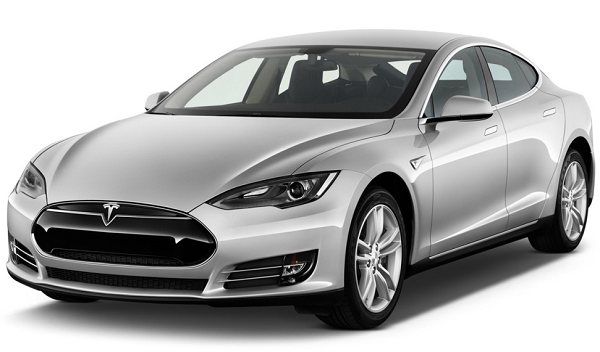
Tesla stands in a class of its own. This is not a compact car—this is a full-on luxury sport sedan. It’s big, really powerful, and absolutely plush. The interior leather is like butter, the super-massive touchscreen displays any information you want (from the locations of charging stations to your calendar to a web browser), and the little touches like automatically extending zero-profile door handles remind you every time you get in the car that you are driving a top-of-the-line luxury machine. It evens turns off when you get out of the car, so you don’t need to push the power button.
Driving the car is similarly luxurious; everything about it is really smooth, from the acceleration to the steering to the steering wheel itself. Because it’s electric, it gives you instant torque, and 302-horsepower motors puts it to good use. The larger size of the car makes it feel a little less nimble than some of the smaller ones I drove previous to it, but it’s still fun to drive. What makes the Tesla unique is its massive battery. With 240 miles of all-electric driving, it’ll get you a lot further than any of the other options without a charge.
Of course, that luxury and range come with a price. $75,000, to be exact. Sure, it’s only $61,500 after the rebate, but it’s still a pretty penny. But if you’re looking to be completely and utterly spoiled by your car every time you get in it, the Model S will do it. This is a beautiful car, and it will not let you down.
Porsche Panamera E-Hybrid

When I saw that a Porsche was going to be at this event, I was pretty excited. Porsche is a storied brand, known for making some furious driving machines like the 911 and the Boxster. I never thought I’d say this in a million years, but I think Porsche missed the mark with the Panamera E-hybrid. It’s a Porsche, so of course it’s a beautiful car, but it feels like too little, too late for this market.
The Panamera is a plug-in hybrid, but it behaves much more like a standard hybrid—when it needs more power (which happens often; the threshold is much lower than the other cars), the internal combustion engine fires up. The 95-horsepower electric motor’s torque is quickly exhausted under the car’s 4,365 lbs., meaning you’ll be driving with the engine a lot of the time. The Panamera is really big, too, making it feel a lot less sprightly than the other cars. The 333-horsepower engine is a blast, though.
Don’t get me wrong—the Panamera E-hybrid is a Porsche, so it’ll rocket down highways and curvy roads with no problem. And it’s absolutely lovely to sit in. But it feels like Porsche should have released this car in 2007, and should be offering an electric version of the Cayman or Cayenne by now. If you’re going to drop $107,000, you should be getting something that destroys the competition in every way, and the Panamera just doesn’t. At least not in this market. (Though a rumored upcoming electric mid-size sedan might change things.)
Is It Finally Time to Buy an Electric Car?
As you can see, the electric car market is booming. From tiny commuters to big luxury sedans and everything in between, if you’re looking for a specific type of car, you can probably get an electric one. And if you can’t, it’s likely that you’ll be able to within the next couple years. It’s gone from a very niche market to a significant one very quickly.
But is it still too early to buy electric? I would argue that it’s not. After driving these cars, especially the Leaf, Volt, and i3, I’m 100% convinced that buying an electric car is the way to go. Electric ranges are going up. Larger cars for families, athletes, and dog owners are available. Plug-in hybrids give you extended ranges of hundreds of miles. And none of that sacrifices the instant acceleration and low center of gravity that give electrics their super fun, sporty appeal.
And with the operating cost of electric vehicles hovering around 1/3 the cost of running a gas car, it’s going to save you money. Very likely a lot of money.
It’s time to buy an electric car. Models from Chevy, Ford, Nissan, and Fiat to Audi, BMW, Cadillac, Tesla, and Mercedes let you find one that fits your needs. And with the federal and state rebates bringing the cost down by $10,000 or more, right now is a perfect time to do it.

